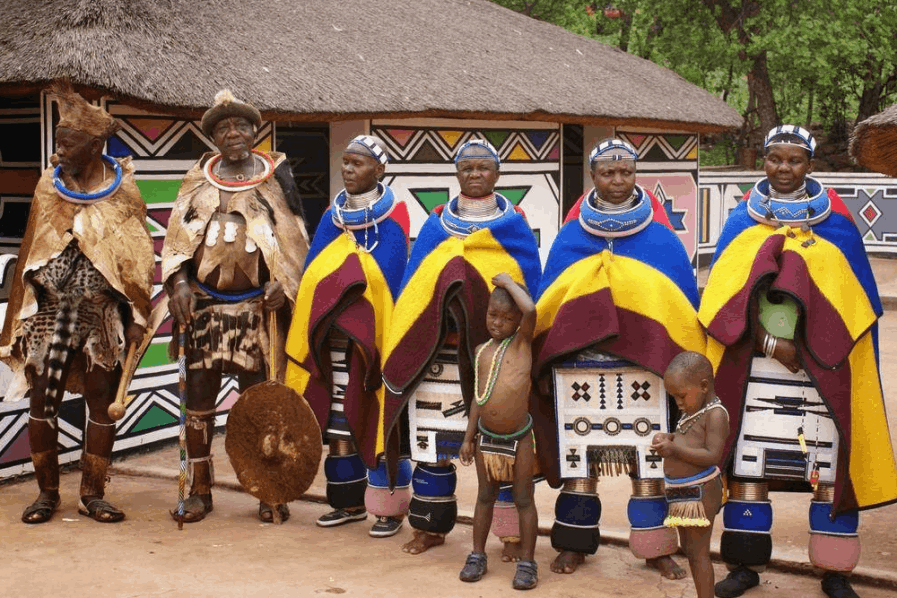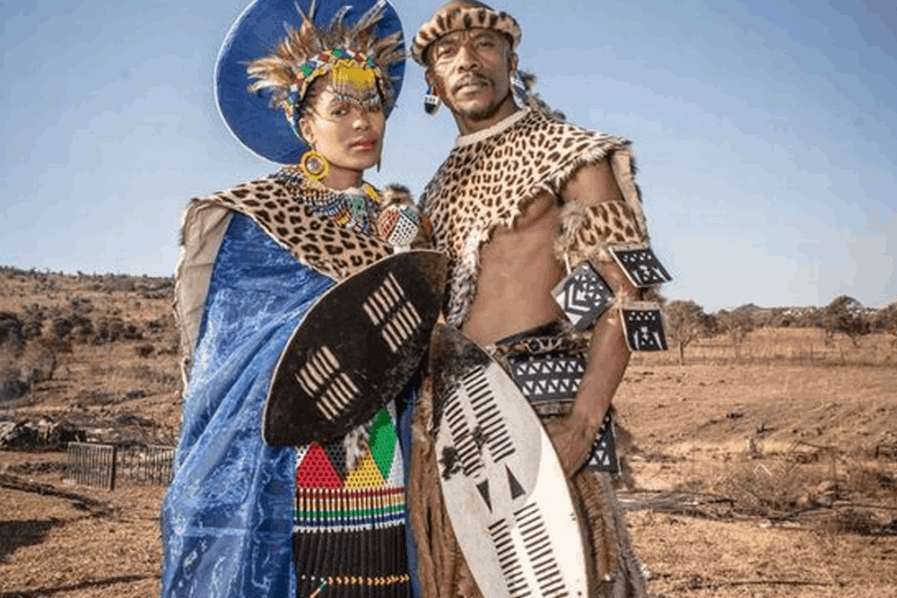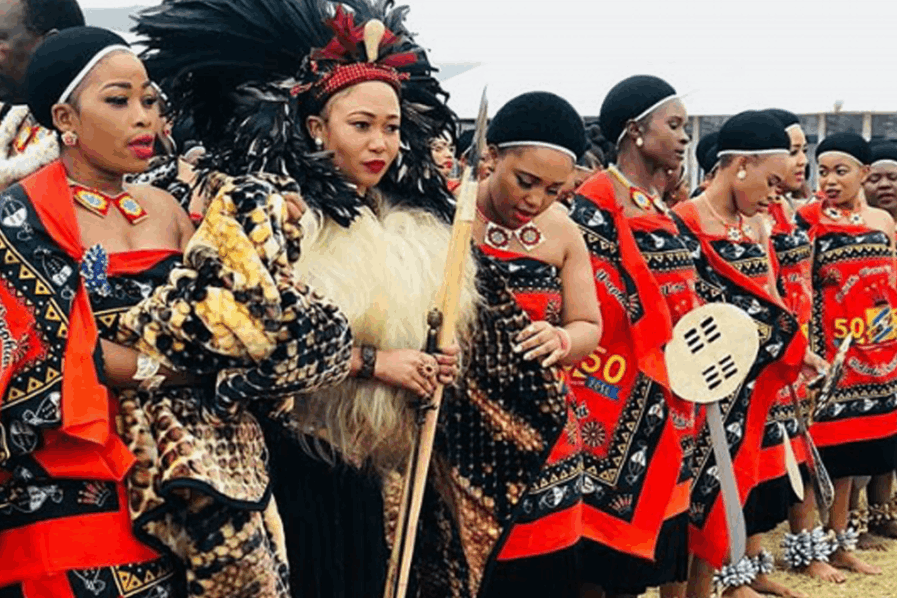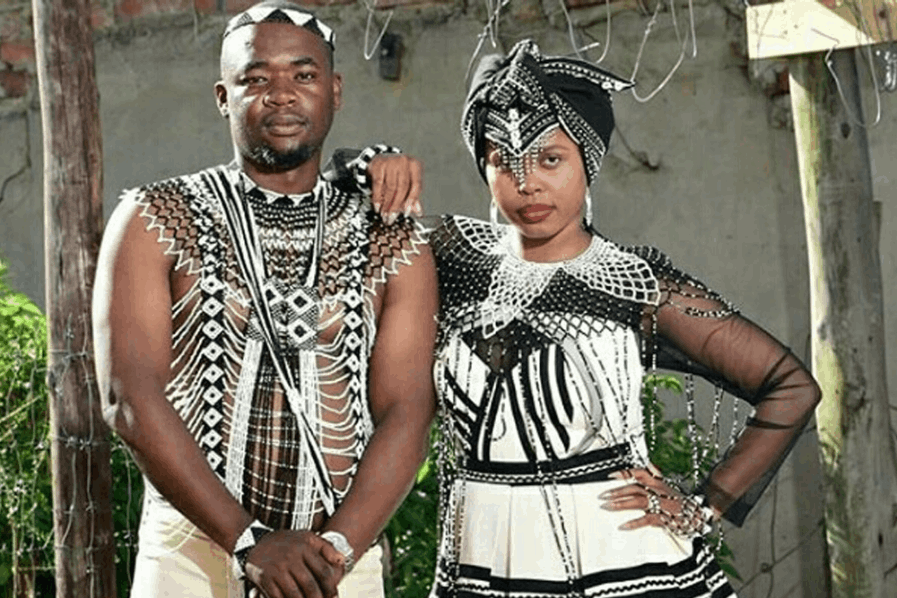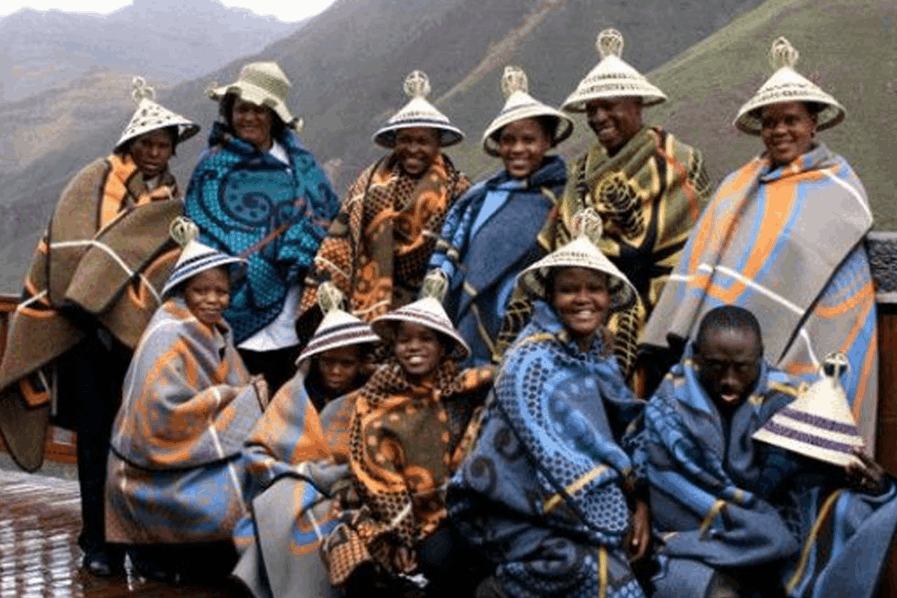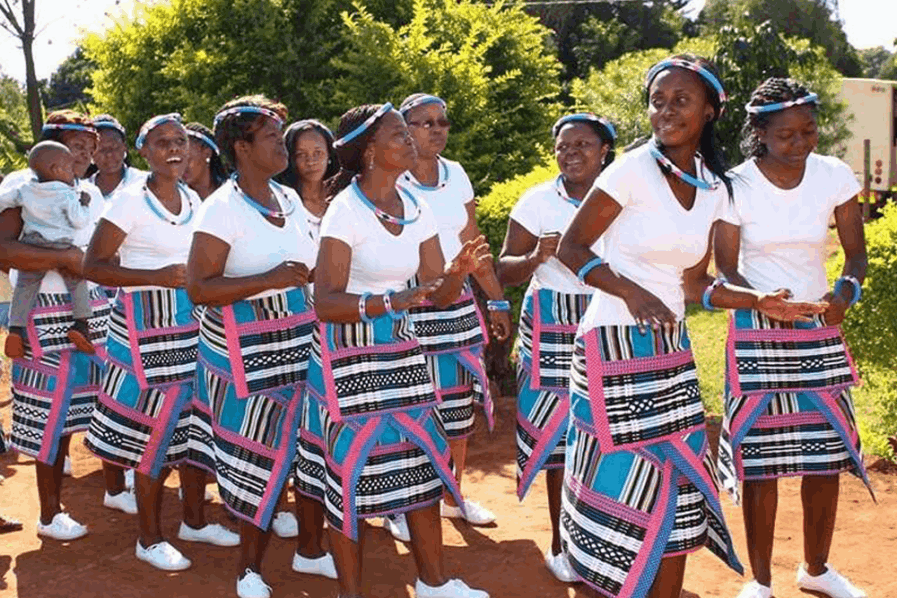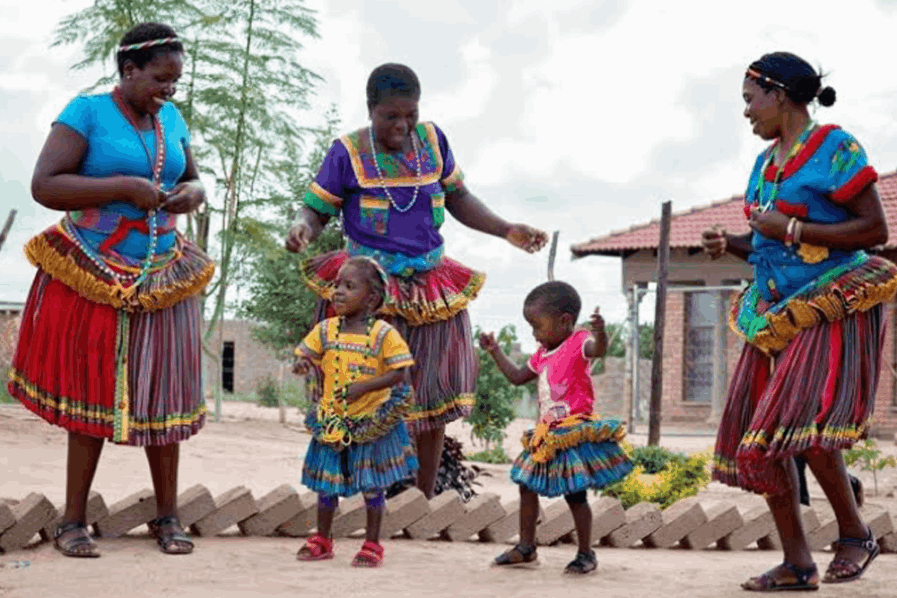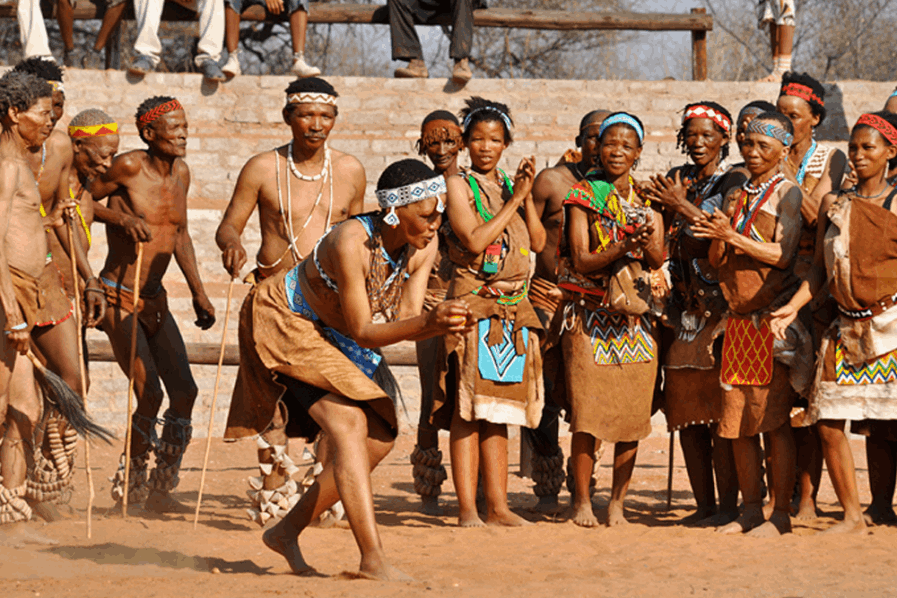Made famous globally by Ndebele visual artist Dr Esther Mahlangu, the Ndebele attire is known for its colourful geometric patterns and gold/copper neck hoops that are worn by the women. The Ndebele tribe is also known for their colourful patterns on their homes and paintings. Ndebele people live primarily in the Gauteng and Mpumalanga provinces of South Africa so next time you’re in these provinces keep a lookout for their fine art.
